Artist Zumba Luzamba on the vibrant aesthetic of Congolese fashion rebels, the sapeurs
The Congolese artist takes a deep dive into a fashion subculture in his show at London's Kristin Hjellegjerde Gallery. ‘I draw people in with style so that they can sit with deeper themes,’ he says
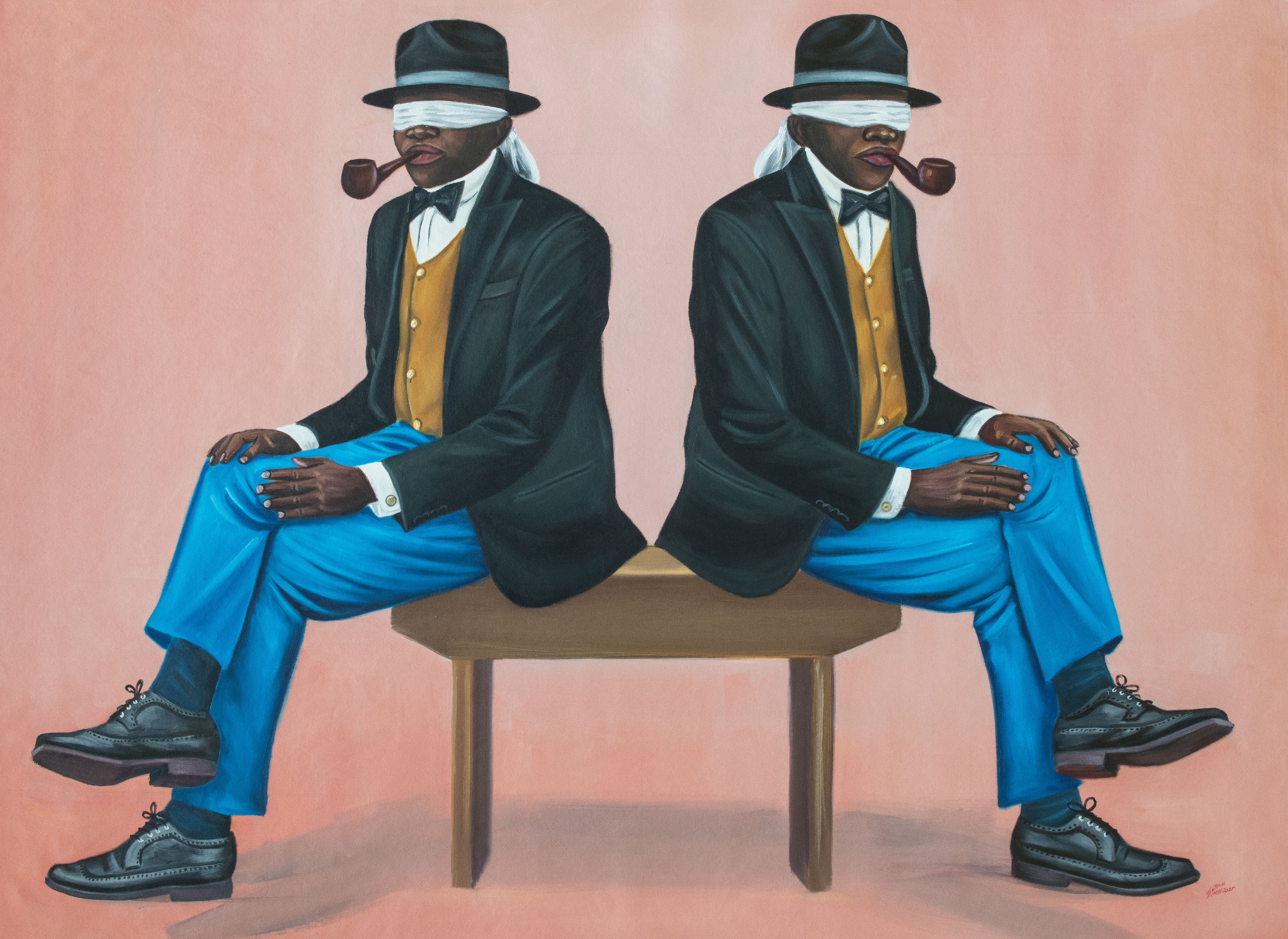
For more than a decade, Congolese artist Zemba Luzamba has been running a political commentary alongside elegant paintings of men and women in colourful suits.
Six men stand in a circle, making a toast. They are dressed in black suits and hats, one hand to their pockets and wearing eye-fitting glasses. in some portraits, they are wearing boldly coloured suits, with a walking stick, or perhaps they are casually sitting and smoking pipes, but they are always elegant. Such are the paintings of Luzamba, whose work is inspired by the creative elegance of the Congo’s ‘sapeurs’.
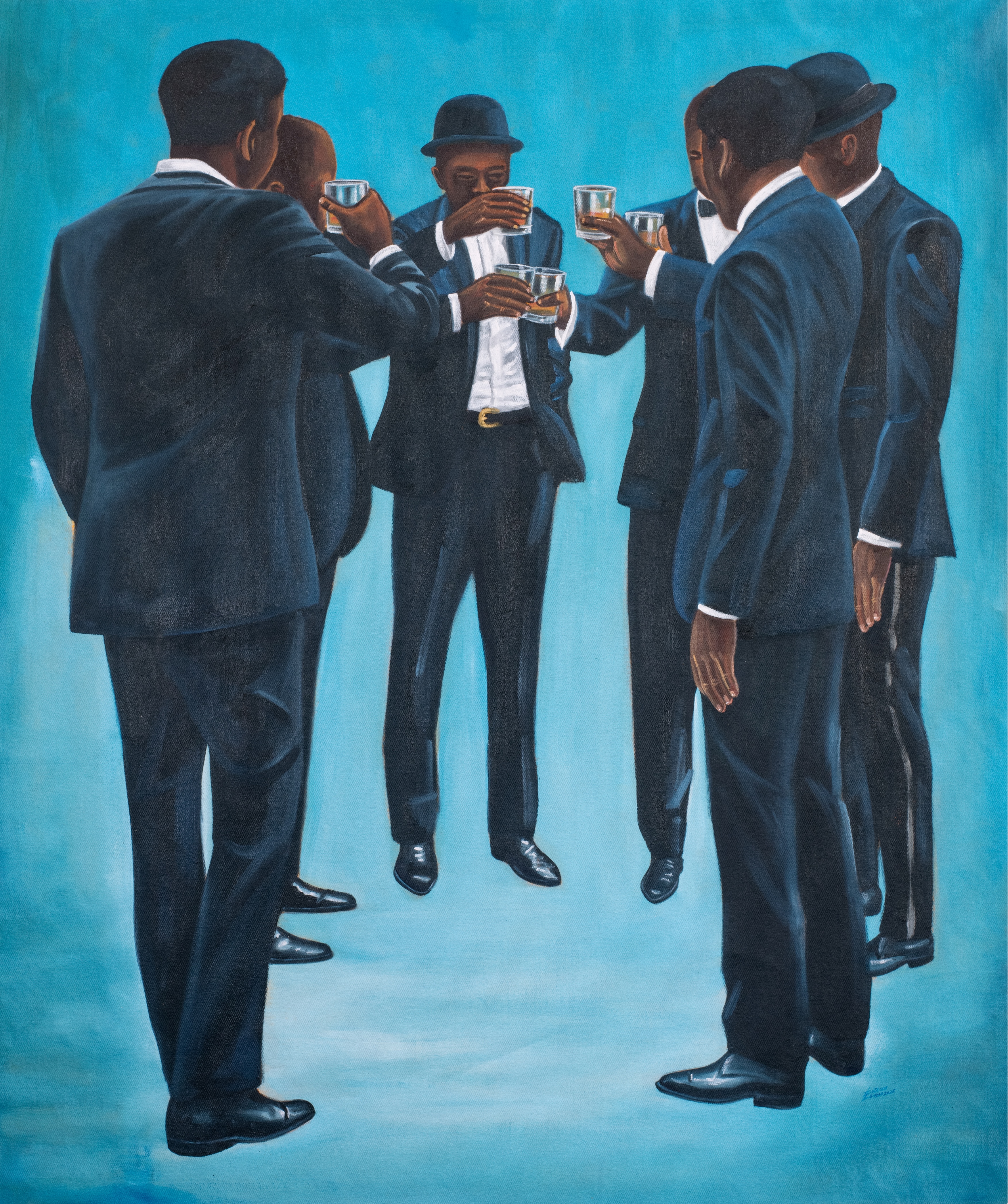
The sapeurs (from the Société des Ambianceurs et des Personnes Élégantes) are members of a fashion subculture who are driven by quiet rebellion. Luzamba has been capturing their elegance in his work over the past decade, exploring themes of migration, identity and politics in bright paintings that draw on his experience and what he has witnessed.
His current exhibition, ‘Angalia Kwa Karibu (Look Close)’, is open at Kristin Hjellegjerde Gallery in London and, once again, is heavy on his practice as a realist who blends aspects of the past into the contemporary, to critique modern political structures that affect the Democratic Republic of Congo and the world beyond.
Zumba Luzamba on his practice and the sapeurs

‘Wearing a suit and tie became an act of subtle resistance – a reclaiming of dignity and freedom’
Zumba Luzamba
Wallpaper*: Your work often features sharply dressed men. Why were you inspired by the Sapeurs?
Zemba Luzamba: Being smartly dressed has always been a part of my identity. I was naturally drawn to the sapeurs – their bold colour combinations, confidence, and elegance deeply resonate with me. But beyond the style, there’s a powerful historical and cultural significance. In the 1960s and 70s, during President Mobutu’s regime, Western-style suits were banned in favour of the abacost, a symbol of political allegiance. In response, wearing a suit and tie became an act of subtle resistance – a reclaiming of dignity and freedom. My work draws from that legacy. The figures I paint are fashion icons and they embody pride, resilience, and cultural memory.
W*: Are you a sapeur yourself?
Receive our daily digest of inspiration, escapism and design stories from around the world direct to your inbox.
ZL: I think everyone in Congo has a sapeurs touch. It’s something you are born into but decide if it’s a path you want to follow.
‘I draw people in with style so that they can sit with deeper themes. That’s exactly what Black dandyism is about
Zemba Luzamba
W*: The Met Gala 2025 theme honoured black dandyism and the sapeurs as part of those shaping African fashion. What did you think?
ZL: Interestingly, [The Met’s ‘Superfine: Tailoring Black Style’] is coinciding with my own exhibition, which makes it feel very meaningful.
The recognition is very important not just to the Black community and their contribution to global fashion and culture, but also for the sapeurs, who are uplifting their communities through their art. Much of my work has been using their own visual language to talk about social issues, and often, I draw people in with style so that they can sit with deeper themes. That’s exactly what Black dandyism is about. It makes you understand people, not only in their elegance or what they wear, it tells you a much larger story. Having my exhibition at the same time as this global celebration – it's like the world is finally catching up to the message. And I feel incredibly proud to be part of that conversation.
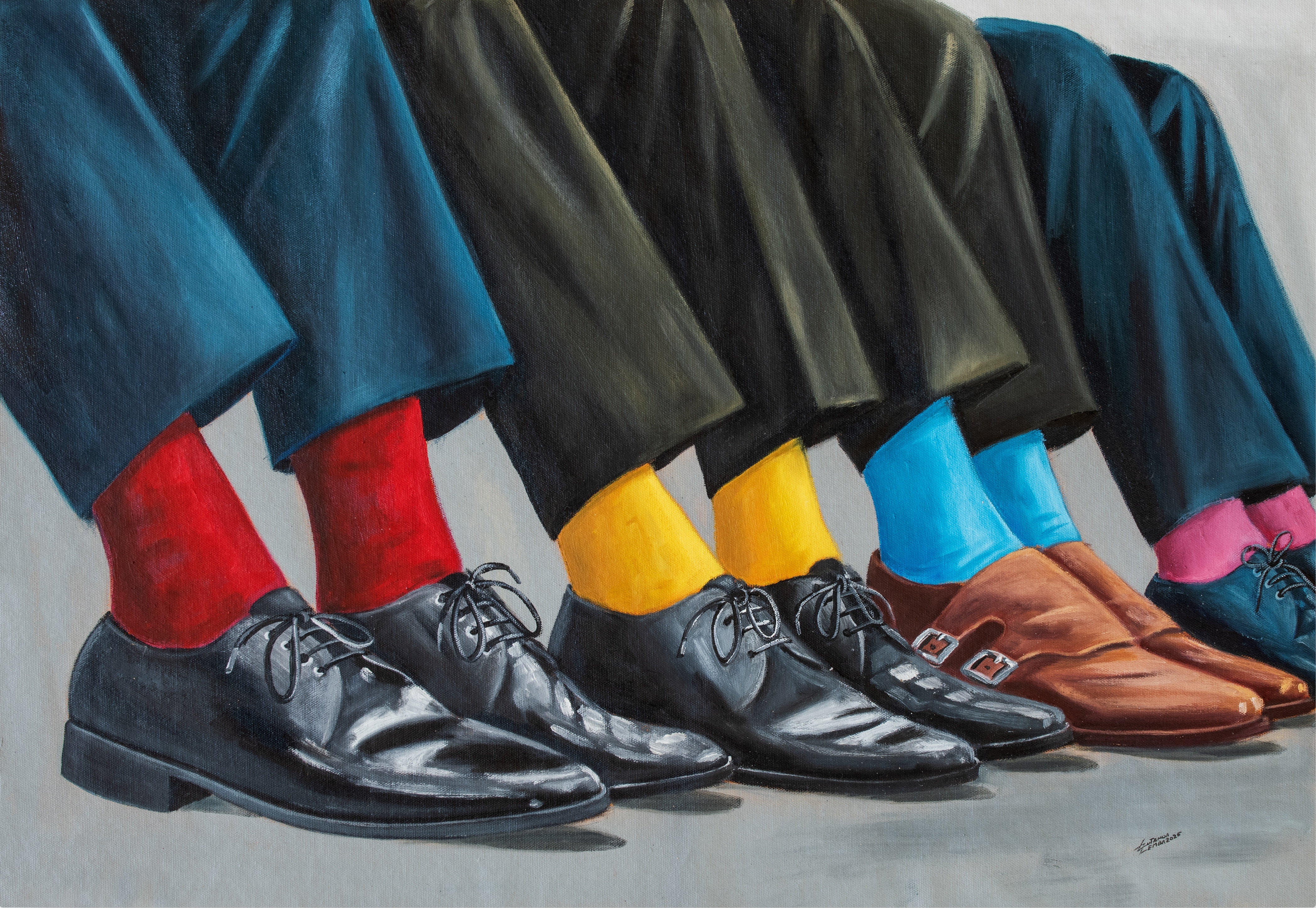
W*: How did your practice as a painter begin?
ZL: My passion for art began back in the early 1980s. I used to be completely obsessed with comic books. I would even draw the characters on the walls of our family home. That early enthusiasm stayed with me, and when I reached secondary school, I decided to pursue it more seriously. I enrolled at Technical Institute of Plastic Art (ITAP), an art school in Lubumbashi, where I began formal training. Growing up in a middle-class family, pursuing a career in art wasn't seen as a respectable path – art was often dismissed as a hobby rather than a serious profession. So, I initially studied literature, but quickly realised it wasn’t where my passion lay. I found myself frequently visiting a local art school, and by grade nine, I made the bold decision to enroll – much to my father’s dissatisfaction. It took time and persistence, but I eventually convinced him to support my choice.
After matriculating, I continued my art studies at a college in Lusaka, Zambia. That journey came with many challenges. We struggled financially, and because I spoke French, there were language barriers, and documentation issues, but I was determined. During this time, I had the privilege of assisting David Chibwe, a respected Zambian artist. Under his mentorship, I learned the foundational skills of painting, starting from preparing canvases to understanding composition and technique. By the late 1990s, job opportunities for creatives were extremely limited. So, in pursuit of broader visibility and prospects, I made the decision to move south and continue building my path as an artist.
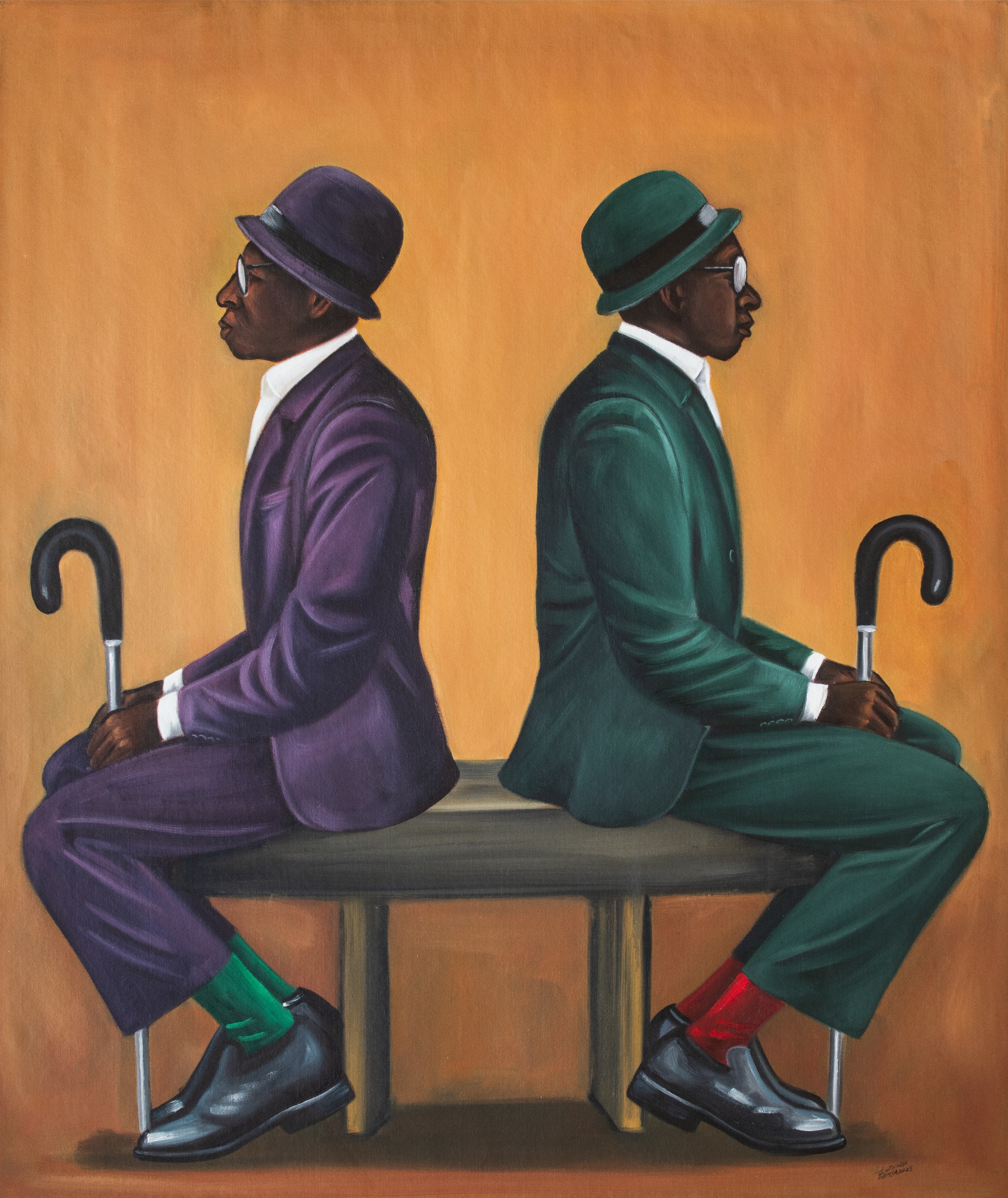
W*: How do you balance aesthetic beauty with political commentary in your art?
ZL: I create works that are visually pleasant, with powerful messages of social or political commentary in the composition, to encourage viewers to engage with them. My aim is to draw viewers in and encourage them to think more deeply on what they don’t see. In my work, I intentionally create compositions that are visually harmonious or pleasing, whether through the use of colour or just doing what I do with the sapeurs and their fashion sense. This initial aesthetic appeal draws the viewer in; I want them to linger long enough to begin asking questions about class, power, migration, identity, or post-colonial struggles.
W*: Your work always leads with themes of resistance, self-expression and community, why is that?
ZL: I mean, we already live on a continent where there is so much inequality and even oppression. Injustice is part of our everyday life. It was important to outline these realities in my work, but also using the sapeurs’ story as a form of history to address what is happening now. Self-expression through protest gives room for more hope.

W*: Aside from the sapeurs, who are the artists or thinkers that have most influenced your work?
ZL: I don’t think I can say but I know It depends on the period of time. I am constantly learning and evolving. I prefer not to limit myself to just a few influences – every creative and thinker I encounter, whether master or newer voices, leaves an impact on my work.
W*: What's the story behind your new series of work and the exhibition, ‘Angalia Kwa Karibu (Look Close)’?
ZL: ‘Angalia Kwa Karibu’ is a Swahili phrase meaning ‘pay close attention’. The idea behind it was to expand on politics and community as a whole. I wanted to talk about the financial burden on successful Black individuals who are expected to support family members as a way of paying them back for the care and education they received in childhood. The tax is not a common practice and is seen as a cultural obligation. I also wanted to explore the hope that can be found in everyday new beginnings. In one of the images, you would see an egg, which stands as a traditional symbol of origin and birth, its golden shell suggesting wealth. You will also find a group of men gathering in a circle to drink whisky as a ritual of celebration, and that was my way of celebrating the community. Beauty is always part of life, but the more attentively we look, the more we can discover what is hidden beneath the surface.
‘Angalia Kwa Karibu (Look Close)’ is on view at the Kristin Hjellegjerde Gallery London until 31 May 2025, kristinhjellegjerde.com

-
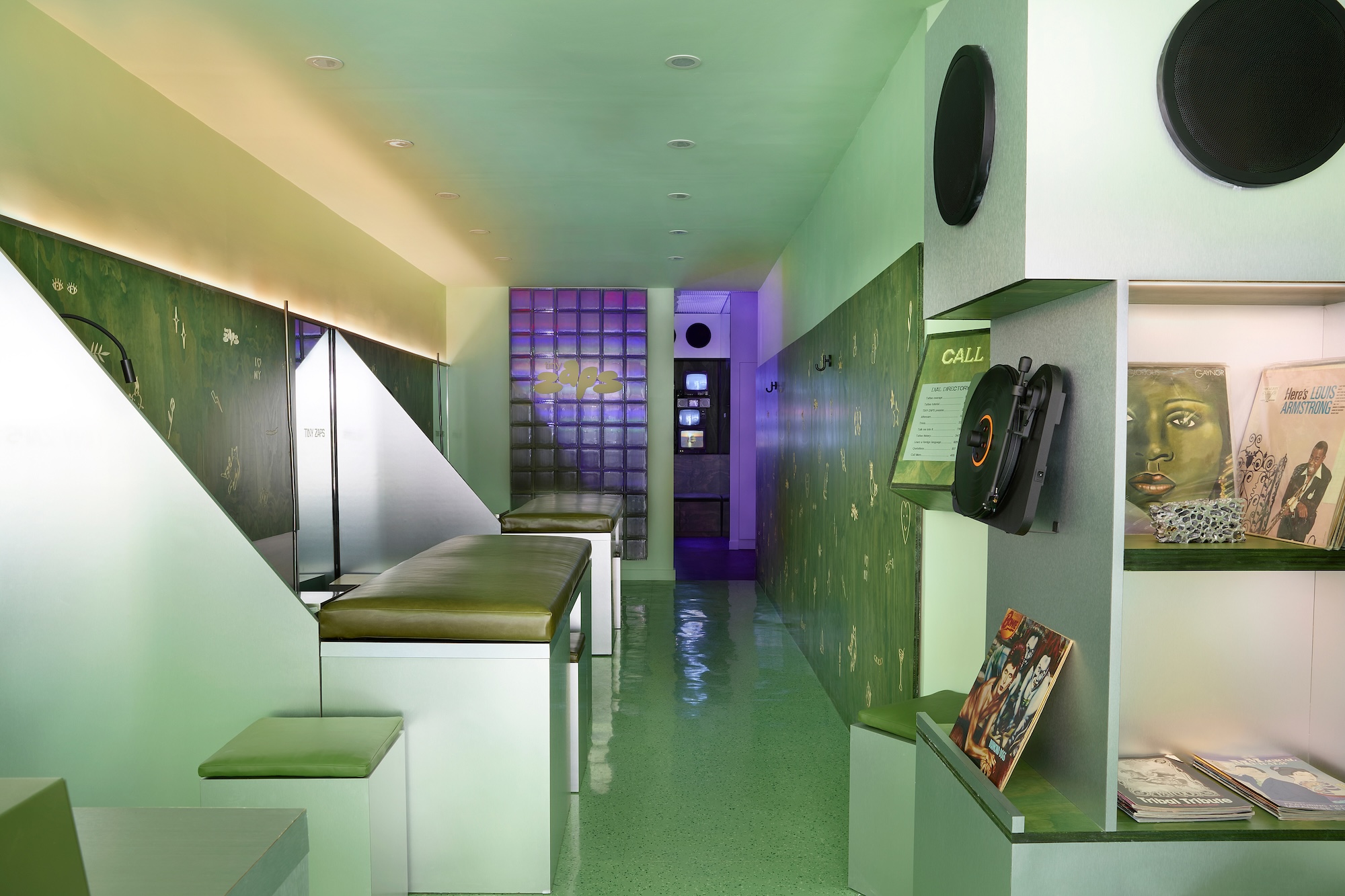 Terrified to get inked? This inviting Brooklyn tattoo parlour is for people who are 'a little bit nervous'
Terrified to get inked? This inviting Brooklyn tattoo parlour is for people who are 'a little bit nervous'With minty-green walls and an option to 'call mom', Tiny Zaps' Williamsburg location was designed to tame jitters
-
 Let’s hear it for the Chopard L.U.C Grand Strike chiming watch
Let’s hear it for the Chopard L.U.C Grand Strike chiming watchThe Swiss watchmaker’s most complicated timepiece to date features an innovative approach to producing a crystal-clear sound
-
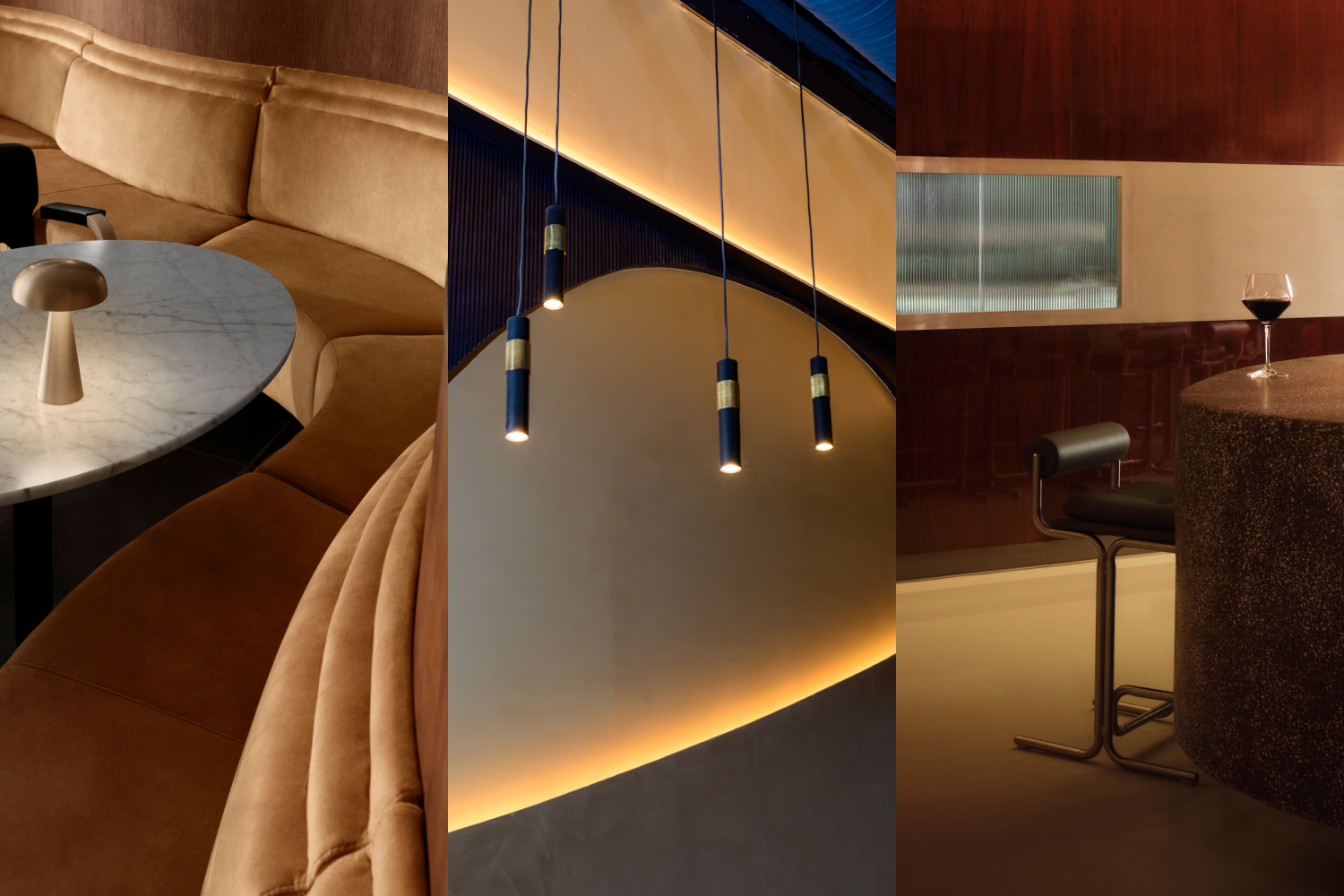 Form... and flavour? The best design-led restaurant debuts of 2025
Form... and flavour? The best design-led restaurant debuts of 2025A Wallpaper* edit of the restaurant interiors that shaped how we ate, gathered and lingered this year
-
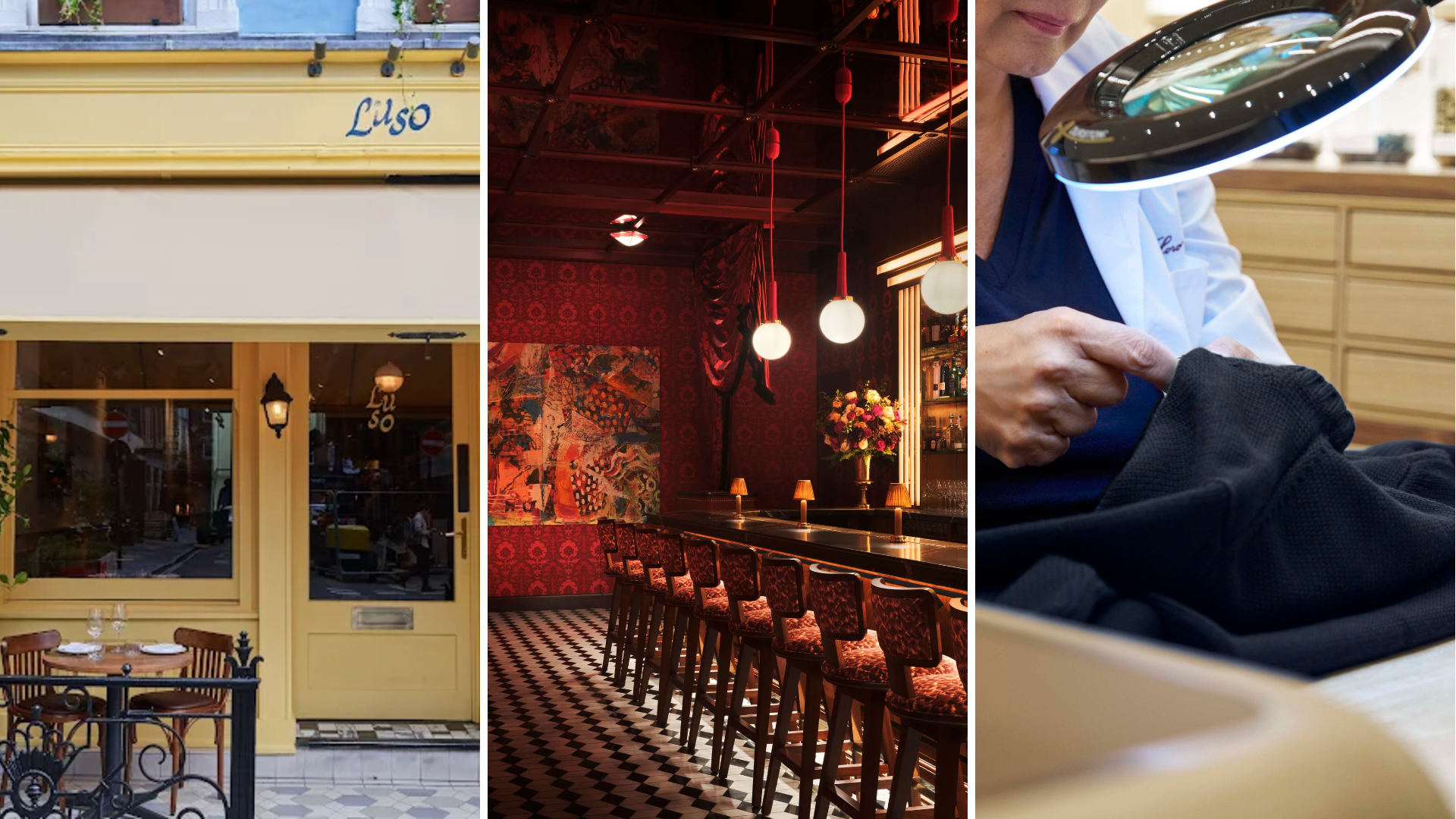 Out of office: The Wallpaper* editors’ picks of the week
Out of office: The Wallpaper* editors’ picks of the week'Tis the season for eating and drinking, and the Wallpaper* team embraced it wholeheartedly this week. Elsewhere: the best spot in Milan for clothing repairs and outdoor swimming in December
-
 Out of office: The Wallpaper* editors’ picks of the week
Out of office: The Wallpaper* editors’ picks of the weekFar from slowing down for the festive season, the Wallpaper* team is in full swing, hopping from events to openings this week. Sometimes work can feel like play – and we also had time for some festive cocktails and cinematic releases
-
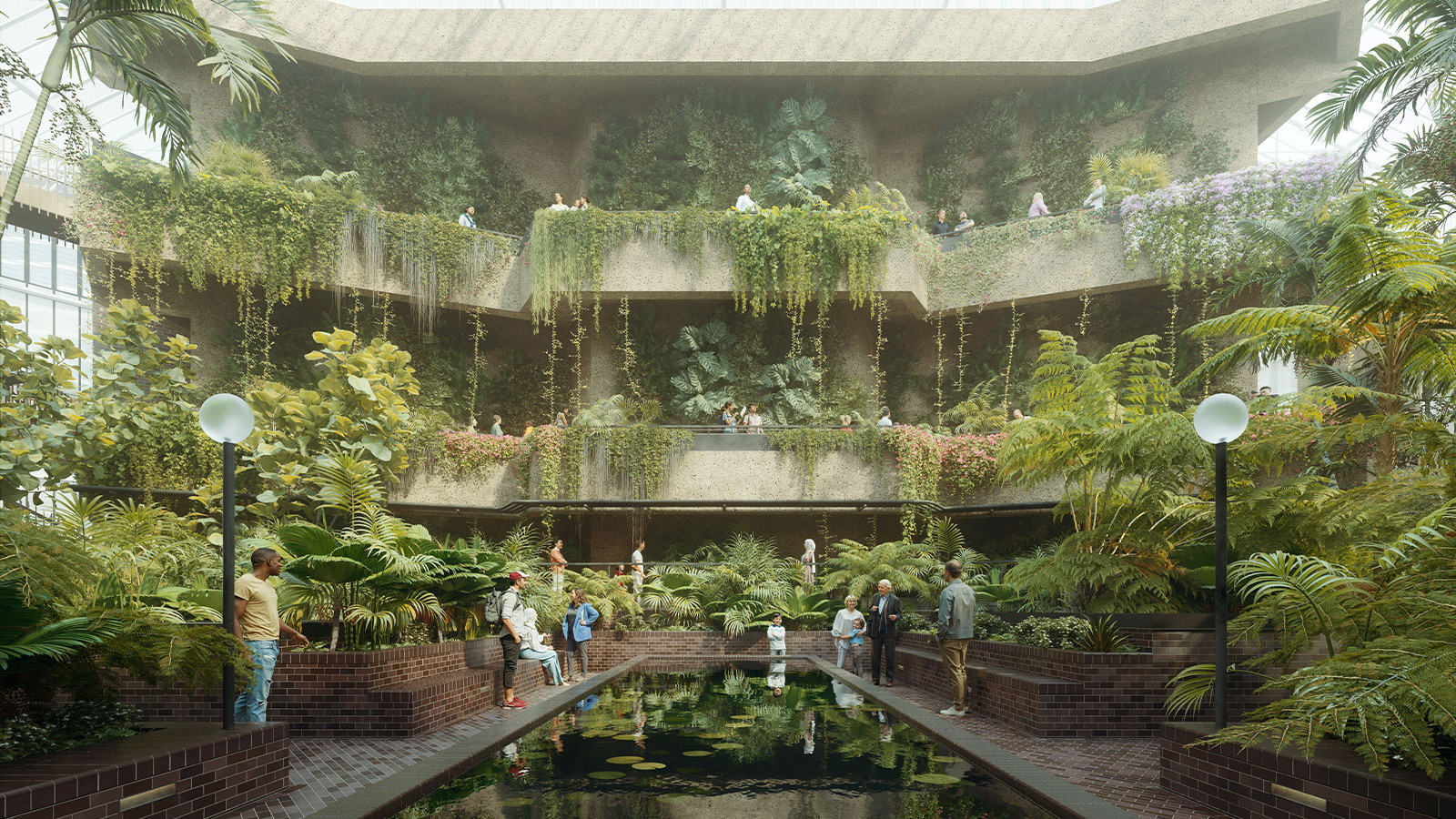 The Barbican is undergoing a huge revamp. Here’s what we know
The Barbican is undergoing a huge revamp. Here’s what we knowThe Barbican Centre is set to close in June 2028 for a year as part of a huge restoration plan to future-proof the brutalist Grade II-listed site
-
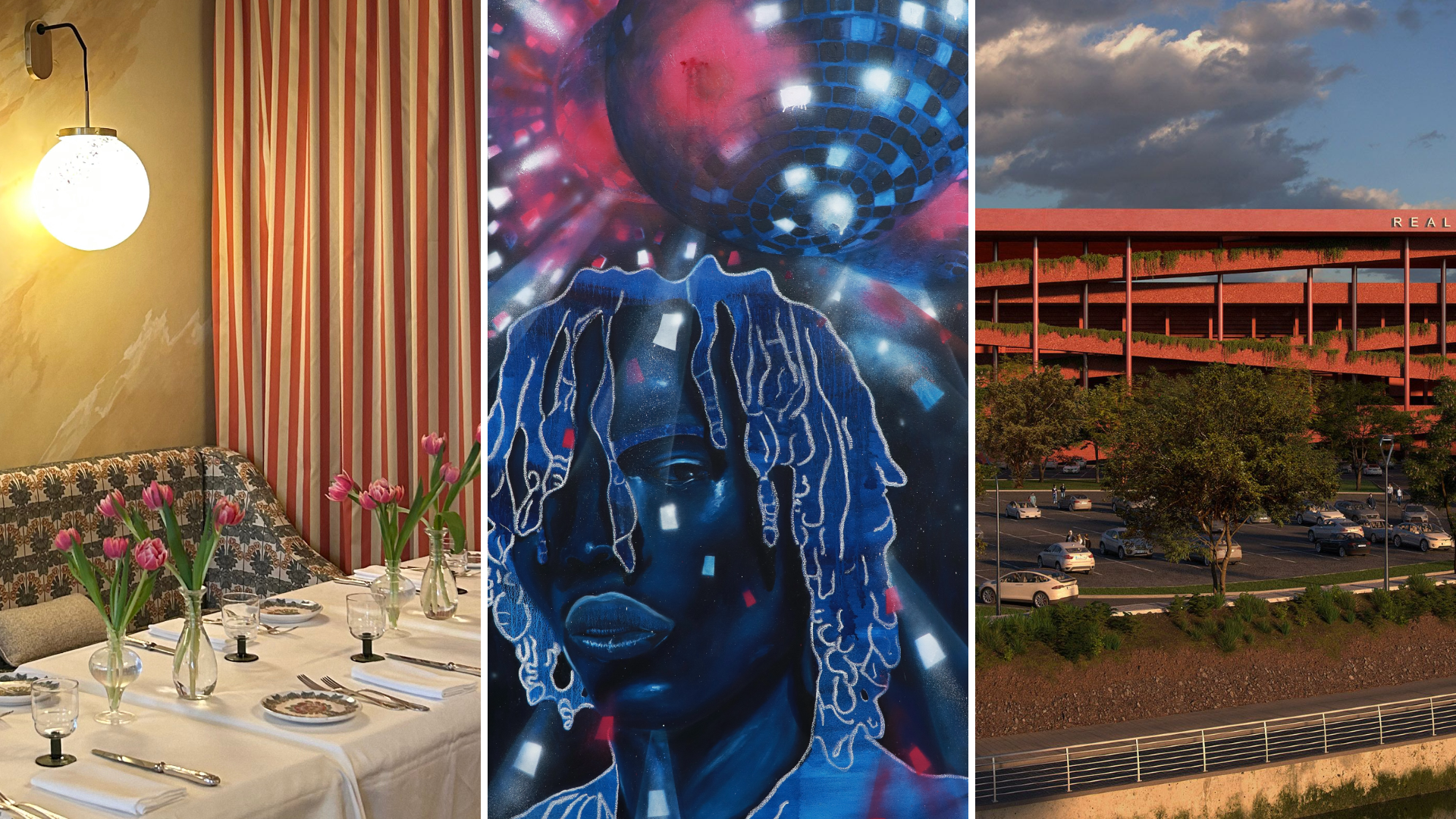 Out of office: The Wallpaper* editors’ picks of the week
Out of office: The Wallpaper* editors’ picks of the weekIt’s wet, windy and wintry and, this week, the Wallpaper* team craved moments of escape. We found it in memories of the Mediterranean, flavours of Mexico, and immersions in the worlds of music and art
-
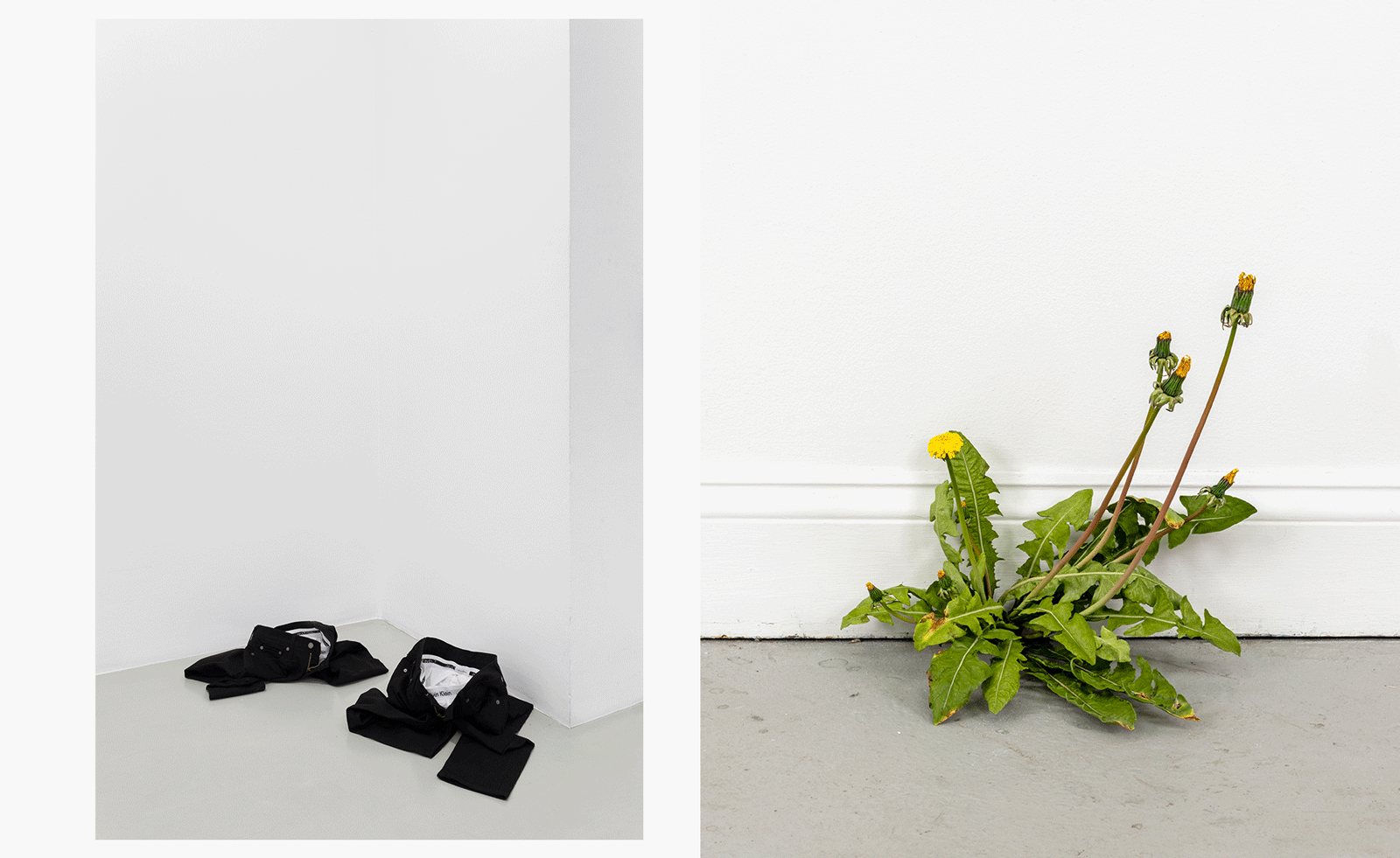 Each mundane object tells a story at Pace’s tribute to the everyday
Each mundane object tells a story at Pace’s tribute to the everydayIn a group exhibition, ‘Monument to the Unimportant’, artists give the seemingly insignificant – from discarded clothes to weeds in cracks – a longer look
-
 Out of office: The Wallpaper* editors’ picks of the week
Out of office: The Wallpaper* editors’ picks of the weekThis week, the Wallpaper* team had its finger on the pulse of architecture, interiors and fashion – while also scooping the latest on the Radiohead reunion and London’s buzziest pizza
-
 Out of office: The Wallpaper* editors’ picks of the week
Out of office: The Wallpaper* editors’ picks of the weekIt’s been a week of escapism: daydreams of Ghana sparked by lively local projects, glimpses of Tokyo on nostalgic film rolls, and a charming foray into the heart of Christmas as the festive season kicks off in earnest
-
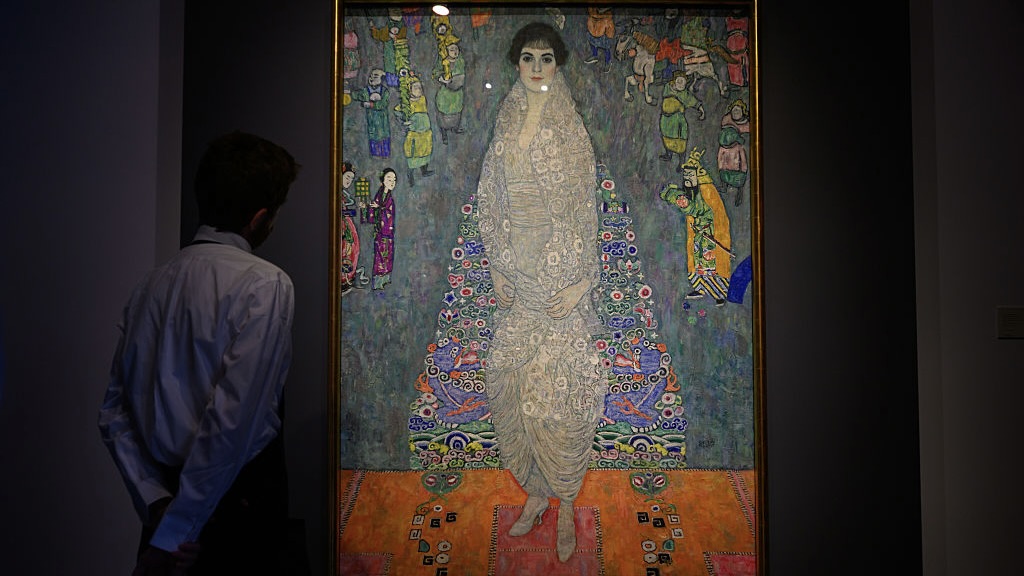 This Gustav Klimt painting just became the second most expensive artwork ever sold – it has an incredible backstory
This Gustav Klimt painting just became the second most expensive artwork ever sold – it has an incredible backstorySold by Sotheby’s for a staggering $236.4 million, ‘Portrait of Elisabeth Lederer’ survived Nazi looting and became the key to its subject’s survival